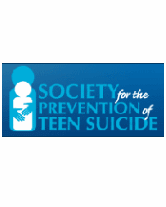The answer is FALSE. Unfortunately, this question represents one of the most common myths about suicide… that discussing it can give kids ideas about doing it. That's just not true. Whether or not we like to admit it, suicide is a tragic reality in the current life of our students. If you were to ask a classroom of high-school students, for example, whether they know anyone who has attempted or completed suicide, between 75% and 100% of them would probably respond in the affirmative.
Suicide is a frequent topic in the media, and is one of the most significant public health problems of our time. Talking about suicide provides an opportunity to address stigma and correct misinformation. It can also enhance coping strategies that help students deal with a long-term social problem. Since the 1980s, when school programs for suicide prevention were first put into place in more systematic ways, there has been a lot of confusion about this topic. Evaluation research done at that time pointed out the dangers of talking about suicide in the classroom in ways that glamorized or sensationalized the topic. Some people misinterpreted this to mean that all school-based programs that addressed suicide directly were potentially dangerous. What we have since learned, according to the Centers for Disease Control and Prevention, is that students can, in fact, benefit from programs that present suicide in a factual way.
Programs that address ?protective factors,' which can mitigate against suicide, are also helpful. Even in elementary school, for example, protective strategies can be enhanced through curriculum that focuses on social problem-solving skills, coping strategies, and the identification of trusted adult members of the child's support system.
Finally, if you think about the power that keeping a secret can have, you can begin to appreciate how NOT talking about suicidal thoughts or feelings can actually increase their intensity. The issue is not whether suicide is talked about, but how it is talked about. Talking about suicide factually and unemotionally, as an alternative to a problem that seems unsolvable, is a concrete way to open up discussion. And once the topic is broached with students, it's really essential that your school have trained resource staff who can follow up. Remember, your job is simply to learn enough information about suicide to be able to identify students who may be at risk and to refer those students for further assessment.













